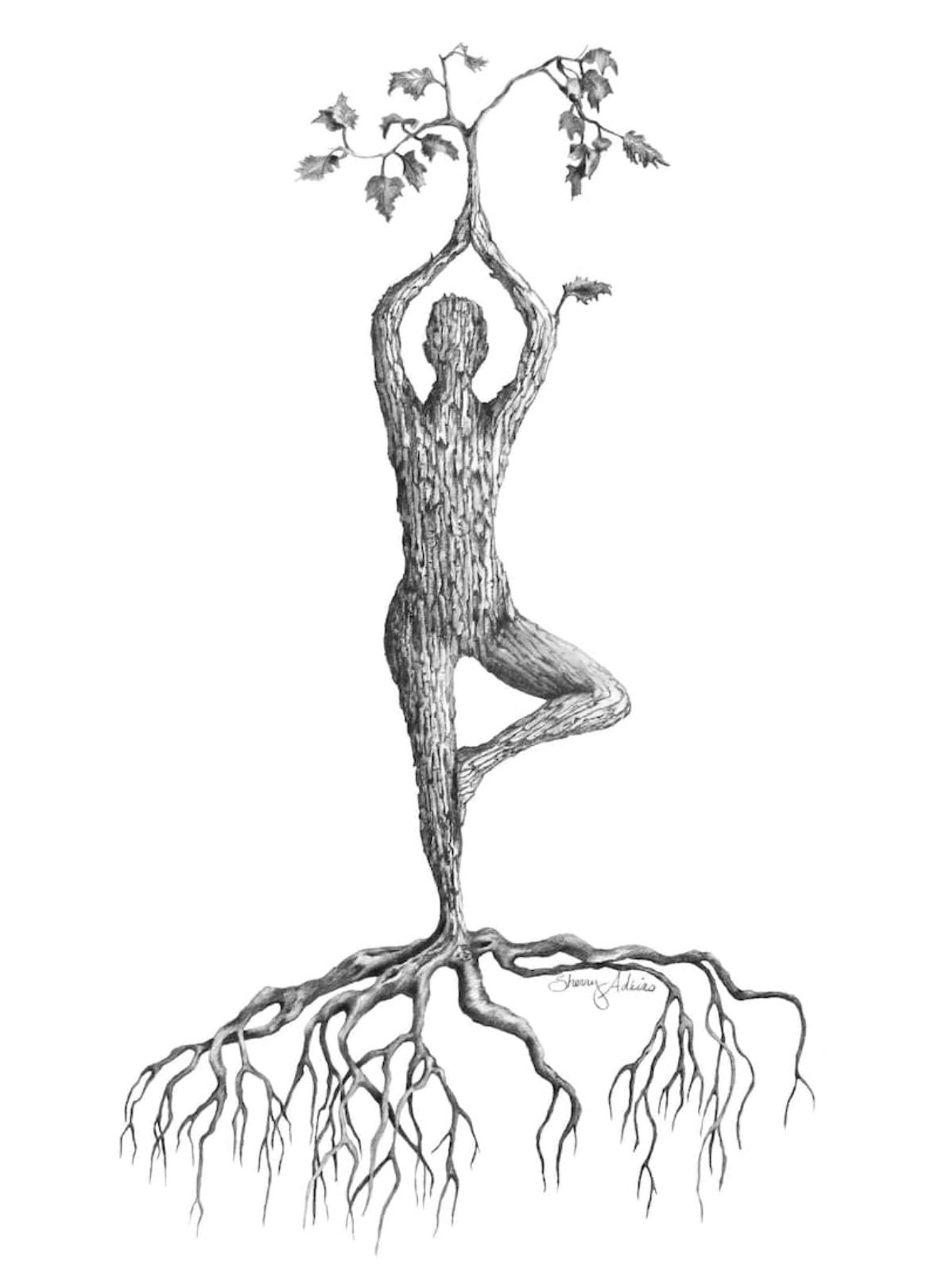Have you ever been greeted by a wagging puppy only to notice a sprinkle of “happy pee” by your shoes? A common term for dogs that I used to gleefully warn my sister that she was making me laugh so hard it could spring a leak of good cheer.
Innocent enough and hardly a worry, who knew as a teenager the happy pee would turn into a little monster later in life?
To my surprise, I had no idea what the happy pee really meant. My female elders kept the leaky secret to themselves. In retrospect the signs were there. The frequent stops to the restroom, tentative commitments to sport activities and abruptly exiting social situations. Embarrassed or fearful of judgement, I noticed how my late mother stuffed her underwear with tissue. Never said a word. Urinary incontinence (UI) is not age related and if inherited, not fated. It’s treatable and just a phone call away.
How the Bladder Works
As the bladder fills, the detrusor, a layer of muscle on the bladder wall, relaxes and stretches to accommodate fluid. At a certain level an urge to pass is felt when it’s full. As the brain signals the detrusor to contract, the urethral sphincter relaxes and the bladder empties.
The urethra, like a duct, and the bladder are supported by pelvic floor muscles. When in tact, these muscles contract during a sneeze or cough and prevent leakage. The detrusor’s job prompts the brain when the bladder is full. But, if the bladder malfunctions; that’s another problem.
Bad Dogs
There are two types of tail wags that are not “happy.” Stress Urinary incontinence, (SUI) and Urge Urinary Incontinence. (UUI) SUI is the tiny drops that escape from a laugh or a cough that can intensify during pregnancy, childbirth, and menopause. Weakening or collapse of the pelvic floor adds to SUI and is further exacerbated by stress, obesity, and smoking.
UUI is a precocial animal wreaking immediate havoc. Its traits are characterized by an intense, and sometimes uncontrollable urge to go. Difficult to delay growing more fierce over time, an “overactive bladder” contracts too often. Sometimes not completely filling or adequately emptying as it should.
UI affects up to 50% of women mostly over the age of 50. Physical therapist, Dr. Shan Morrison identifies studies showing up to 92% of female athletes are more likely to experience SUI with higher frequency. Widely considered an emotional or hygienic problem due to improper pelvic floor education, 1 in 2 women stopped performing sport and 1 in 3 nulliparous or younger, stopped a form of exercise due to UI.
Pelvic floor muscles are to your body what a leash is to your labradoodle. Like a harness at the bottom of the torso, it controls and secures bodily functions. Spanning from hip-to-hip and back-to-front, the pelvic floor is a flexible set of muscles that support reproductive and excretory organs.
No secret that preggies pee a lot. With the baby bump growing and pressing against the bladder and other neighboring organs, it’s no wonder. In my late twenties, I was blessed giving birth to my daughter. After having sufficiently recovered from the precious occasion, I went out for my first run. Five minutes in, I sprung a leak. A little one. Later, I recognized a pattern connected to symptoms exacerbated by spaghetti dinner the night before. Soon learning that all things tomato were out if I was to finish any high impact activity on a dry note. I was fine with the tomato adjustment until my sixties. Carbonated water was next on the list. Never a carbonated drink fan until our ever-thrilling fridge with the built-in soda stream arrived. The sparkling water turned on SUI with a vengeance and one day interrupted a vigorous trot on horseback with a gush hard to hide.
The Revelation of General Lifestyle Changes
Along with pregnancy and menopause, obesity, chronic constipation and incorrect lifting can further injure the pelvic floor. When these muscles are unable to relax, contract, or move with coordination, they do not function as expected. The aggravation erodes a sense of well being and quality of life. Here are a few changes that can help:
- Diet. Regulating dietary intake and shedding extra pounds will lessen risk or improve ongoing symptoms. If your body mass index (BMI) is 30 or higher, losing weight can reduce the pressure on your bladder and pelvic floor. Even a 10% weight reduction may improve stress incontinence.
The Mayo Clinic suggests it may also be necessary to eliminate these foods and beverages:
-
-
-
- alcohol
- carbonated beverages
- caffeine in all forms, including chocolate
- citrus fruits
- pickled foods
- tomatoes
-
-
Identifying UI food triggers and choosing foods that support bladder health include:
Fruits Bananas, apples, grapes, coconut, watermelon, strawberries, and blackberries.
Vegetables Asparagus, broccoli, cucumbers, kale, carrots, celery, lettuce, and peppers.
Fiber-rich foods Lentils, beans, raspberries, barley, bran, oats, and almonds.
Protein Fish, chicken, tofu, and eggs.
Experiment with seasonings to keep your staple items interesting while avoiding potential irritants.
- Water. Drinking enough water is important. For UI, it seems like more trips to the bathroom, but too little water is not ideal because waste may become concentrated and acidic heightening irritation in both the bladder and intestines.
- Exercise. Do the right exercises. High-impact exercise and sit-ups put pressure on the urethra and pelvic floor increasing leaks. To strengthen the pelvic floor, temporarily replace high-impact activities such as jogging and aerobics with brisk walking, yoga, or pilates.
- Stop Smoking. Over time, many smokers develop a chronic cough. It puts an enormous amount of pressure on the pelvic muscles causing them to weaken. Nicotine irritates the bladder and not only increases risk of SUI, but bladder cancer as well.
- Managing Stress. Not all stress is bad, says Prof. Diego Pizzagalli, a neuroscientist at the University of California, who studies the effects of stress. “Harmful stress has three main components: a lack of control over the situation, unpredictability and the potential for humiliation.” UI is the perfect storm. If general lifestyle changes fail, seek the next line of action.
The Pelvic Floor
I did. During my late sixties, I finally sought advice at a pelvic floor clinic while I was in Australia. In Melbourne, UI is nothing to be ashamed of, and frankly; no big deal. A therapist taught me how to “Kegel.” I struggled with it, yet realized why as a seasoned yogi, “mula bandha” remained a vague concept. Sanskrit for “root lock,” mula bandha is intensionally isolating the contracting and lifting of the pelvic floor. Much like Kegel exercises, both promote the upward movement of energy in an area that is continuously pulled down by life. Learning how to apply Kegel was helpful as well as discovering I had been wrestling with pelvic floor prolapse.
The pelvic floor is also part of musculature protecting the spine as well as stabilizing overall balance. From a 2024 study of pelvic floor disorders in US women, the Mayo Clinic does in fact, suggests yoga. Though prolapse is irreversible, dysfunctional muscles in and around the pelvic floor can benefit from yoga’s cat/cow and happy baby pose.
Kegels tracked with biofeedback ensure the muscles of the pelvic floor are activating. It can take up to six weeks of exercise to improve symptoms. In the meantime, women with mild SUI find inserting a large tampon (pressing against the urethra for support) prior to regular exercise may prevent or reduce leakage.
Bladder training is recommended for UUI. In the process, knowing that the pelvic floor is part of the posterior fascial chain, a quick fix is squeezing your calves during an inconvenient urge. It can delay a wave while en route. Walking on your tippy toes is another one.
I was dogged with UUI by the time I was seventy. Mostly out-maneuvering the urge, chocolate showed up as another offender. The “stim-chair” was added to my repertoire.
Other Treatment Options
Electrical Stimulation. One of the most commonly used treatments is the electromagnetic chair. This FDA approved, non-invasive solution, users remain fully clothed and comfortably seated. A viable option addressing SUI and UUI, a mild electrical current passes through nerves in the lower back and pelvic floor while dispensing the equivalent of a thousand Kegel exercises in thirty minutes.
A minimally invasive electrical device can be implanted to treat UUI. By sending mild pulses to sacral nerves or nerves in the tibia near the ankle, it enables the brain and corresponding nerves to communicate more effectively with the bladder.
Medications and Injections. UUI has several medications available. From drugs that modify the body’s chemical messaging, to topical estrogen, reuptake inhibitors, and skin patches. Notably, most medications have side effects or contraindications to be discussed with your doctor.
Botox injections are an effective treatment for an overactive bladder. Administered into the detrusor to relax and reduce spasms causing urgency, the treatment usually lasts for several months.
Dr. McKertich, a Melbourne based Urological Surgeon uses injectable bulking agents for both SUI and UUI. Collagen or a synthetic material is administered into the urethral wall near the bladder neck bulking the tissues to increase the resistance of outflow and a better seal. The effects are immediate, but also require repeat visits.
Pessary. A pessary is a removable, non-surgical device inserted into the vagina and resting against the urethra. It supports and elevates the bladder neck preventing drips during physical exertion. This non-invasive treatment is effective for mild to moderate SUI. It is removable and reusable. A similar device along the same principle is shaped like a tampon easily purchased at the drug store.
Surgery. A common surgical out patient procedure for women with SUI is the pelvic sling. Specifically, the mid-urethral sling (MUS) is a kind of mesh strip inserted under the urethra to provide support and reduce leakage. Pelvic sling procedures, particularly the MUS, is designed for SUI when strong leakage occurs during exercise as well as coughing, sneezing or vomiting.
Denver based surgeon, Dr. Alison Tate, is a specialist in Urogynecology and Reconstructive Pelvic Surgery. She believes many women who suffer SUI, MUS can be a worthwhile procedure. With high success rates, studies have shown that over 80% of patients experience significant improvement or resolution of their symptoms.
So here I am in my seventies equipped with an MUS and additional botox support. With my pelvic floor surgically repaired, I got my groove back as well as my life. Resurrecting the zest for all the activities I love to do, I’m planning my next marathon, back in the saddle high and dry, and oh yes; laughing my happy tail off. If I’d only known then, what I know now.
Don’t let the happy pee run wild, tame it early-on. UI nips at your confidence with unpredictability that should not be allowed to chase you down the diaper isle in hopeless resignation. All the options for returning your bounce are worth openly communicating and discussing with your doctor.
The pelvic floor is a rock star. It works in harmony with excretory, abdominal and back stabilization. Essential for maintaining balance throughout the whole body, the wide-ranging benefits of pelvic floor, urinary health and function is essential to physical and mental resilience for your entire life
Published: Yoga+Life Magazine 4/23/25





